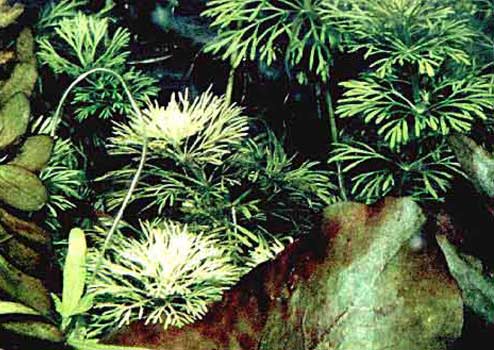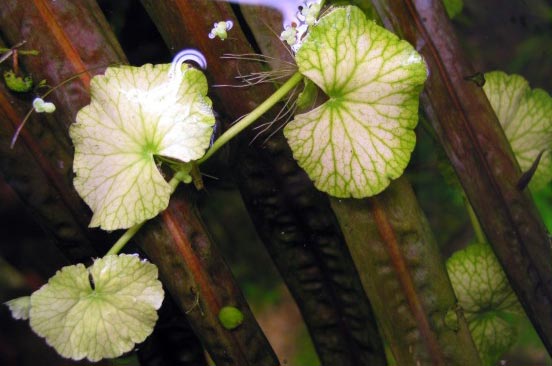Chloroses in aquatic plants
Chloroses are chlorophyll (leaf green) formation disorders. Any element that is either contained in chlorophyll or is involved in its synthesis is a possible cause:
Included are nitrogen (nitrate, ammonium) and magnesium.
Iron and manganese are also involved in synthesis.
Here the very chlorotic shoot tips of a Limnophila sessiliflora. The condition of the plant improved significantly just one day after the addition of an iron fertilizer.


Further details
Despite the extremely high loss of green leaves, it is still growing quite well. I have not yet been able to narrow down the cause.
It is fertilized with Ferrdrakon, nitrate, phosphate and potassium are present, according to the analysis of the waterworks, calcium and magnesium deficiency should also be ruled out; in addition, the same plant grows in other tanks of the same household without this extreme chlorosis.
We can only assume that the potassium content is too high in relation to the magnesium due to single fertilisation with potassium salts. Potassium and magnesium behave antagonistically when absorbed by the plant. A potassium content that is too high in relation to magnesium can block magnesium uptake. The pennywort either has a higher magnesium requirement than other plants or a more susceptible ion pump, which would explain why no other plants are affected.

